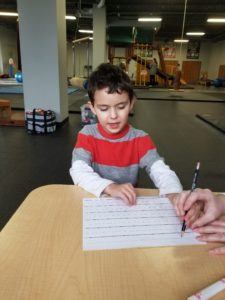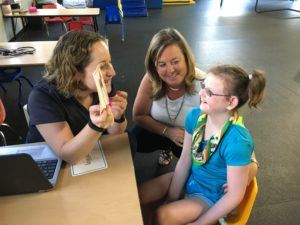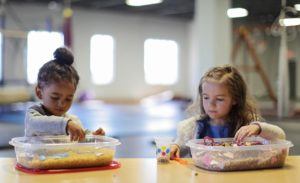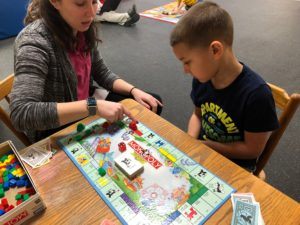Blog
In order to learn about the world around them, children need to experience a variety of environments and situations. They need to be able to move, explore, climb, play, learn, and rest. In order to do all of these things as efficiently as possible, children need a varied diet full of nutrients. Without these critical nutrients, children may not have the energy, attention, or cognitive functioning to absorb all of the information around them.
Eating balanced and nutritious meals is crucial for a child’s overall health and development. As we grow, our bodies use the nutrients we get from food to help us function and perform daily tasks. According to the article “The Importance of Healthy Eating in Children” posted on www.livestrong.com, children need “plenty of water and enough protein for growth and cellular repair. Children need adequate carbohydrates for their high energy levels and just enough fat to provide essential fatty acids for cell growth. Finally, children’s diets require enough iron, calcium and vitamin D to strengthen blood and bones as well as zinc and magnesium to support the immune system. All of these nutritional requirements can be met through a diet high in fruits, vegetables, grains and meats.”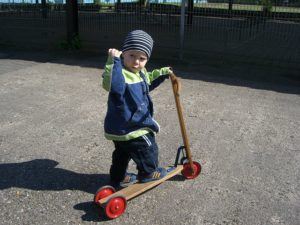
If you are having trouble getting your child to eat a variety of foods, here are some tips and strategies to try at home:
• Try new foods that are similar to those your child already enjoys. For example, if your child likes French fries, try introducing a few sweet potato fries on their plate. If your child likes pizza, try adding chopped up vegetables on the pizza. If your child likes chips, try pretzels or veggie straws.
• Use what your child likes to your advantage. If your child likes cheese, try broccoli and cheddar soup or cooked vegetables with cheese sauce. If your child likes macaroni and cheese, try using vegetable pasta instead of regular pasta.
• Involve your children in the food-making process. Take them grocery shopping, have them help mix ingredients together, or have them taste-test along the way. Knowing that they were part of making the food may encourage kids to try the finished product.
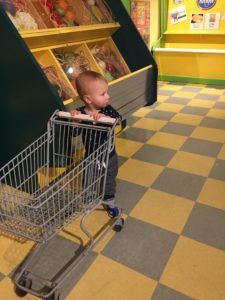 • Consider planting fruits and vegetables outside. This can be a great learning experience for children on where food comes from, as well as an opportunity to try something they actually grew.
• Consider planting fruits and vegetables outside. This can be a great learning experience for children on where food comes from, as well as an opportunity to try something they actually grew.
• Take advantage of dips. Find a dip that your child enjoys, such as ranch, spinach and artichoke dip, or hummus. Use that as a tool to encourage trying new foods to dip.
• Make mealtimes and food prep fun and be creative. Use cookie cutters to cut food into different shapes, make silly meals from your children’s favorite TV shows, or come up with silly names for foods.
• Give your child choices. Children like to be in control and letting them pick from a few choices of what they will have on their plates is a good way to increase cooperation.
• Limit grazing. This will help your child establish an internal system that promotes eating when they are hungry rather than snacking throughout the day, which can increase their willingness to try new foods.
• Find foods that are your child’s favorite color, or try to eat all the colors of the rainbow. Make a game out of it and see who can eat the whole rainbow first
For more information on typical oral motor and feeding development in children, visit www.abcpediatrictherapy.com and review the developmental checklists. For guidelines regarding suggested dietary needs for children of different ages, review https://www.mayoclinic.org/healthy-lifestyle/childrens-health/in-depth/nutrition-for-kids/art-20049335. If you have additional concerns about your child’s diet and nutrition, speak to your pediatrician.
Try the above tips and if your child does not begin eating a variety of foods, reach out to us! We, at ABC Pediatric Therapy Network, can help!
Read MoreMealtimes and food are such an important part of our society and culture. We eat together as families, we go out to restaurants with friends, and we bring appetizers and snacks to gatherings for all to enjoy. A significant amount of our social lives and family routines revolves in part around food. For families with children who are picky eaters, these enjoyable and social experiences can become stressful and conflict-causing situations.
Picky eating can lead to serious health concerns and have long-term effects on the well-being of the child. Picky eaters often have a very limited diet – eating only a handful of foods willingly. Because of this, picky eaters are not typically getting all their nutritional needs each day. This can lead to deficiencies, such as iron, calcium, zinc, and vitamin deficiencies for example, which can lead to other illnesses and complications later in life. These deficiencies can also have the following negative effects:
· decrease your child’s attention and energy levels, which can prevent them from being able to explore their environment and learn new information as efficiently
· decrease cognitive functioning
· weaken their immune system, making it harder to fight off illnesses and diseases
· increased risk for weight problems (under or overweight)
· dental problems if preferred foods are limited to snack items/sweets
Not only does picky eating affect a child’s health and well-being, it also negatively impacts the social well-being of the child and the family as a whole. As a parent, one of your primary roles is to provide for your child, and not being able to fulfill that role can be stressful, isolating, and extremely frustrating. Increased stress can lead to conflict in relationships, including the parent-child relationship, as well as the relationship of the parents. Picky eating can lead to refusal of foods and negative behaviors from the child (screaming, crying, etc.). These behaviors can all increase a parent’s stress and frustration, as well as lead to negative feelings and attitudes towards mealtimes and family routines. For the child, not being able to participate in snack or mealtimes at school or daycare can negatively impact his/her ability to interact with peers and learn social norms.
For more information on typical oral motor and feeding development in children, visit abcpediatrictherapy.com and review the developmental checklists. If you have concerns regarding picky eating, here are a few tips to try at home:
· Create a mealtime routine and try your best to stick to it. Children thrive with routines. Having a routine helps them understand what is happening right now and what to expect next. This can help lessen anxiety, especially when introducing and trying unfamiliar foods (which can be an anxiety-causing situation for many children). Try to eat meals around the same time each day and in the same place, such as at the table.
· Give your child choices. Children like to be in control and letting them pick from a few choices of what they will have on their plates is a good way to increase cooperation.
· Limit grazing. This will help your child establish an internal system that promotes eating when they are hungry rather than snacking throughout the day.
· When introducing new foods on the child’s plate, always offer foods that the child likes and will eat, as well.
· Try to boost the nutritional value of the foods in the child’s current diet. For example, if the child likes smoothies, mix in some yogurt for added protein or some spinach for added vitamins and minerals. Consider vitamins and other supplements, as well.
· Provide lots of positive feedback, even for small victories. If a child allows an undesired food to stay on his/her plate the whole meal instead of throwing it on the floor, tell the child how proud of them you are. Use sticker charts, rewards and incentives, etc. to increase cooperation.
If you try these suggestions and are still struggling with success at mealtimes, please reach out to us at ABC Pediatric Therapy Network. We can help! Family time should be full of wonderful memories and not stressful power struggles.,
Read MoreAfter reading Prewriting Tips to Grow On and working on these skills with your child, you should be on the right track to begin handwriting letters and numbers with your child.
1. By 5, your child should begin writing numbers 1-5 and capital letters of his/her first name.
At first, give your child opportunities to trace the capital letters of his/her first name. Once they have mastered this and stay on the lines, they are able to begin writing the letters with a visual model. Focus on learning the appropriate formation of each letter, beginning all letters at the top rather than the bottom. Learning how to form letters correctly from the beginning helps them succeed later. Once your child’s formation of letters is appropriate, work on writing letters independently, without a visual model. When your child learns to write his/her name, s/he is ready to learn the rest of the alphabet.
2. By 5.5, your child should be able to write numbers 1-10 and all capital letters.
Start with capital letters A-M. Begin tracing, then writing with a visual model, and move onto writing independently. Then focus on N-Z following the same sequence. Lastly, put it all together, writing letters A-Z independently.
3. By around 6.5, your child should be able to write all lower case letters.
Follow the same sequence with lower case letters as you did with upper case letters. Lower case letters can also be divided into 3 different categories (tall, diver, and other letters) to teach.
Tall letters: b, d, f, h, k, l, t
Diver letters: g, j, p, q, y
If your child is having difficulty with letter formation, try making starting dots so your child knows where to begin each letter. Also writing in different mediums such as finger paint, sand, shaving cream, playdoh, chalk, and dry erase markers can help children learn how to form letters. Writing in different tactile mediums has been proven to help children learn to write.
After your child has mastered forming capital and lower case letters, it is now time to work on line alignment and sizing. Using horizontal three lined paper (ADD picture) with bold/colored top and bottom lines can assist with line alignment and sizing. Additionally, highlighting these boarders can help. Highlighting the space below the dotted line can help with alignment of lower case letters.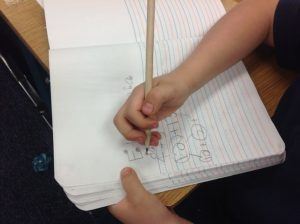
It is now time to move onto writing words and sentences. Make sure letters stay formed and aligned correctly when completing these tasks; sometimes when children begin to write words their formation and alignment decrease. You will now also have to focus on spacing letters within words and spacing between words. The best way to space between words is to use your child’s finger as a space marker.
Again, if you are having concerns or if you child is not progressing like you think s/he should, please do not hesitate to contact ABC Pediatric Therapy and specifically ask for an occupational therapist for more ideas geared towards your specific needs and if you have any additional questions or would like a free screening. Visit our website at www.abcpediatrictherapy.com to find the location nearest you.
Read More1. By a young age, encourage your child to color and explore using paper and crayons as this is an integral part of your child’s prewriting and fine motor development. Continue working on purposeful scribbling, coloring in large/small shapes, drawing (specifically people), and using your child’s creativity throughout his/her childhood.
2. By 2 years old, your child should begin grasping writing utensils in palm and imitating vertical lines.
3. By 2.5 years old, your child should be able to grasp a pencil with thumb and fingers instead of a fist and begin drawing horizontal lines.
4. By 3 years old, your child should begin drawing circles stopping within ½” of the endpoint and making crosses (+).
5. By 3.5 years old, your child should begin drawing X’s.
6. By 4 years of age, your child should begin having a static tripod grasp (grasp using 3 fingers but limited movement within fingers/wrist).
7. By 4.5 years of age, your child should begin to draw squares.
8. By 5, your child should begin drawing triangles and writing numbers 1-5 and capital letters of his/her first name.
9. By 5.5, your child should be able to write numbers 1-10 and all capital letters.
10. By around 6.5, your child should be able to write all lower case letters and have developed a dynamic tripod functional grasp.
If by 4, your child is demonstrating difficulty with holding a writing utensil (pencil, crayons, markers) with 3 fingers and maintaining a functional grasp, it is beneficial to use broken crayon pieces or color/write on a vertical surface as these two activities encourage use of a functional grasp.
Additionally, if your child is still demonstrating difficulty, there are hand strengthening activities you can complete to work on strengthening the specific muscles needed to hold/maintain a functional grasp:
1. Use tweezers to pick up small objects
2. Play with playdoh
3. Use thera-putty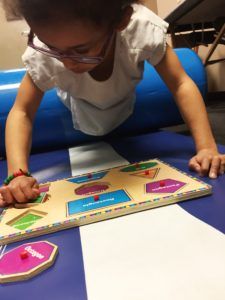
4. Engage with interlocking construction toys such as tinker toys or bristle blocks
5. Encourage water play with spray bottles, water guns, squirt toys, sponges, etc.
6. Clothes pin games
7. Hole punch activities
8. Squeeze toys and activities such as using glue
9. Weight bearing activities such as completing activities in prone (on stomach), wheelbarrow walking, animal walks, etc.
**Pencil grips should be used a last resort when teaching a child to hold a writing utensil as this hinders the development of functional grasp.
If you are having concerns or if you child is not progressing like you think s/he should, please do not hesitate to contact ABC Pediatric Therapy and specifically ask for an occupational therapist for more ideas geared towards your specific needs and if you have any additional questions or would like a free screening. Visit our website at www.abcpediatrictherapy.com to find the location nearest you.
Read MoreFrustration. We all experience moments of frustration, but the way in which we each handle our frustrations is very different and also very important. When children experience moments of frustrations it may include behaviors such as yelling, screaming, crying, hitting, etc. 
Does this sound familiar? Parents oftentimes feel overwhelmed and frustrated when their child is unable to communicate what is wrong or frustrating them and doing these undesirable behaviors. These frustrations and behaviors may actually be happening because your child is unable to effectively communicate to you what is wrong or what they want.
Let’s say you wake up in the middle of the night to your child crying and screaming. You are able to calm your child down, but they are still not able to tell you what is wrong with them. You know that something is wrong with your child, but you do not know the reason because your child cannot tell you; did they hit their head, have a bad dream, or are they sick? Only your child knows what is going on, but why won’t they tell you?
This type of situation can be both scary and frustrating for parents, but what can you do to help your child? Firstly, realize that children who have a difficult time communicating their wants/needs/ideas are more likely to become frustrated because their needs are not being met or they are not being understood. It is not necessarily that the child is trying to be bad, but that the child is so frustrated at not being able to communicate effectively that they communicate in the way that works for them which is the unwanted behavior. This decrease in communication and increase in frustration go hand-in-hand with children “acting out” or doing an unwanted behavior. When a child can effectively communicate their wants/needs/ideas, frustration and unwanted behaviors are more likely to decrease if the problem was an inability to communicate.
Secondly, make sure your child is on the right track developmentally with their speech and language.
Here are a few things to be on the lookout for:
· By 12 months of age, a child should begin making single words such as Mama, Dada, Doggie, Ball, Bye-bye, Hi, etc.
· By 24 months of age, a child should be using 2-word phrases frequently such as “bye-bye daddy”, “my ball”, “go potty” etc. and be able to identify basic body parts
· By 24 months of age, you should be able to understand approximately 50-75% of what a child is saying; you should be able to understand about half of what a child says.
· By 36 months of age, a child should be able to answer basic “wh” questions (e.g., “what’s your name”, “where does it hurt”, etc.) and be approximately 75% or more intelligible.
For more information on typical speech and language development in children up to six years of age, try our Interactive Screening Tool at checklist.abcpediatrictherapy.com.
If you notice that your child having a difficult time communicating, here are a few tips to try at home first:
· Use pictures or symbols that your child is familiar with. Have your child point to the picture or hand you the picture of what they are trying to communicate. Tell your child what you think their intention is and complete the task. For example, if your child points to the picture of the potty, say “Oh, you need to go potty. Let’s got to the potty” and take your child to the bathroom.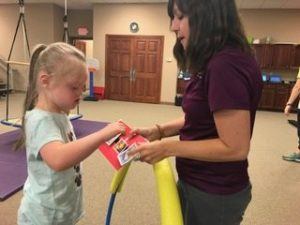
· Use basic hand signs and gestures with your child to help meet their basic wants/needs. Beginning signs to use with your child may include “more” and “all done.”
· Label items and objects with your child and talk about them.
· Incorporate music and play into your child’s daily activities.
· Talk and play with your child often. Children learn best through play and with other people face to face.
If your child’s communication skills do not begin to show improvement within a few weeks, it would be recommended to schedule a speech and language evaluation with your local Speech Therapist. For more information on speech and language development and speech therapy services, visit https://www.abcpediatrictherapy.com
Read More1. Understand the time your child should be able to attend to a seated task.
1 year: 1 minute
2 years: 2-4 minutes
3 years: 8 minutes
4 years: 10 minutes
5 years and up: 15 minutes
2. Give your child plenty of sensory/movement breaks throughout the day.
In today’s world, children are not given the breaks they need to function to their fullest potential. Allowing children to move around throughout the day will give them opportunities to let their energy out and ideally focus better when they are sitting. Running, climbing, jumping, and participating at recess is one of the best sensory motor activities a child can do at school. However, if the child needs more breaks or more structured activities during the day provide the following:
3. Provide proprioceptive input/heavy work through the school day.
Proprioceptive input activities involve heavy resistance and input to the muscles and joints. Engaging in these activities may help regulate a child’s arousal level, concentration, and ability to sit still/attend to a task.
· Wall/chair push ups
· Animal walks like crab walks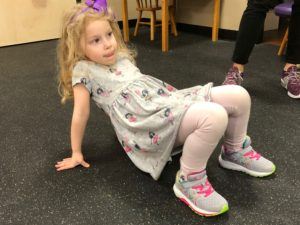
· Jumping up and down
· Sit ups
· Push ups
· Jumping jacks
· Wheelbarrow walks
· Arm Squeezes/self-hugs
· Complete activities in prone/on belly
· Chew on tougher consistencies, chew tubes, or hard candy
· Drink water through a straw
· Play oral motor games with straws during breaks
· Eat crunchy foods at meal times
· Apply a weighted blanket 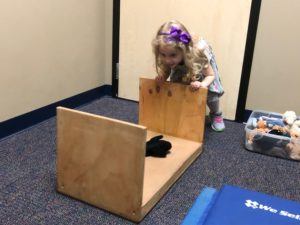
· Wear tighter clothing
· Pushing/pulling heavy objects
· Give the child more chores to complete around the classroom—wiping off dry erase/chalk board, putting up/pushing in chairs, washing tables, rearranging book shelves, sharpening pencils, carrying heavy boxes, cutting thick paper, etc.
4. Do these activities at home to continue regulating your child’s body. This can even help with homework time if your child is having a hard time concentrating at home.
5. Make breaks cards so your child is not abusing getting out of work both at work and at school.
Make a card for teacher’s choice, child’s choice, and proprioceptive input/heavy work. Have at least 2 of each type of card.
6. Talk to the teacher to determine if there are environmental changes that can be made.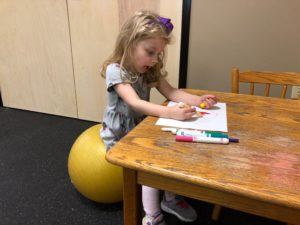
Could your child benefit from fidgets, wiggle seats, or TheraBand applied to their desk? Does your child have to sit on the floor during circle time? See if your teacher could use a designated carpet square to make a specific area for your child to sit.
7. Reflex Integration Testing
It may be beneficial to contact ABC Pediatric Therapy to have your child’s reflexes tested. Some of your child’s reflexes may not have integrated correctly when s/he were a baby which could cause difficulty with attention/focus, sitting upright in a chair, and some other deficits that are inhibiting your child’s full potential to learn.
8. Contact ABC Pediatric Therapy specifically an occupational therapist for more ideas geared towards your specific needs and if you have any additional questions. Visit our website at www.abcpediatrictherapy.com to find the location nearest you.
Read MoreWhy are crawling and creeping important for development?
February 23, 2018 / Diane L. Crecelius, PT, CEO
It is important to remember that each stage of development builds on another. Each step is important for its own reason part of which is to build strength and/or endurance for the next step of development. Preferably you do not want your child to skip any steps as it could affect the ability to master the next step.
Crawling is basically commando crawling. The belly is in contact with the floor, elbows and knees are bent and the head is upright. The child progressively pulls on the floor with bent arms and legs to advance himself across the floor.
Try this – it is hard work!
Your child will develop neck and back extensor strength as well as arm strength that will allow him/her to progress to creeping. Creeping is a means of mobility with the arms straight, belly off the ground and weight on the hands and knees. The child reciprocally moves his/her arms and legs to progress across the floor.
Something you might not consider that is gained with creeping is a different visual field. When a child is commando crawling he/she sees a world that is on the ground. Once creeping, the world a child can view expands. This bring new information into a child’s brain to process and interact with.
A child puts weight on an open hand when crawling. Did you know that this weight on the palm stretches out the small muscles in the hand. This stretching of the muscles prepares a muscle for use for fine motor skills like pinching. Children that do not crawl might have difficulty with handwriting or shoe tying as the strength and endurance to maintain small muscle control to perform these functional tasks might be more challenging.
Interesting fact: Look at your child’s sweet little hand and forearm. Did you know that there are 35 muscles that control the movements of the hand?!?! That is a lot of muscle action!
As you can see, much is gained while crawling and creeping so it is preferable that a child not skip this stage. As a parent do not push your child to walk too quickly. Encourage each stage of development to happen as there is a purpose for each stage that builds upon another.
What should you do if your child skips the creeping phase or does not creep for long? Wheelbarrow walking is a fun activity that will put a lot of weight on the palms and simulate the same muscle actions as creeping. So hold your child’s feet and have them walk with their hands. Make a game out of it. Place puzzle pieces or Mr. Potato Head pieces around the room. Have your child gather the pieces and complete the activity at the end.
Continue to educate yourself as a parent on next step skills in child development so you know what toys to have at home and what skills to encourage and when.
For all your child’s developmental checklists go to https://www.abcpediatrictherapy.com.
Read MoreParenting needs to come with a handbook. How many times have you thought that?
Here is some helpful developmental guidelines so you can become an informed parent. Know what to encourage and when!
By 6 months your child should:
- Sit alone for short periods
- Begin to belly crawl
- Roll back to belly and belly to back

- Grab feet and bring them to mouth
- On belly props up on straight elbows
- Reach for a toy when playing on belly
- Hold a toy and shakes it
- Put fingers in mouth
- Hold hands open at least 1/2 of the time
- Smile at self in mirror
- Cup drinking in introduced
- Soft, smooth solids
- Move chewed food to center of mouth before swallowing
By 9 months your child should:
- Maintain sitting for at least 60 seconds with hands free to play
- Crawl independently
- Pull to stand from floor

- Walk with 2 hands held
- Wave bye-bye
- Release objects intentionally
- Feed self finger foods
- Bang a toy on the floor
- Pass a small object between hands
- Babble same sounds
- Respond to “no”
- Vocalize different syllables
- Tolerate smooth solid foods
- Make sounds while eating with food in mouth
By 12 months your child should:
- Cruise along furniture
- Independent standing
- Get into and out of sitting
- Corral a ball with arms and hands in sitting
- Transition sit to stand and stand to sit
- Grasp thick crayon or pencil in fist, does not mark
- Turn page of a cardboard book
- Help to pull off simple clothing
- Put object into others
- Pull shoes off
- Feed self with fingers
- Babble using different sounds
- Take turns vocalizing
- Point / gesture
- Tolerate coarsely chopped food
If your child is having trouble achieving any of the milestones above, go to https://www.abcpediatrictherapy.com for more information. The ABC staff is here to help you help your child. Each developmental skill builds on the next one. You do not want your child to skip skills or fall behind. Their self confidence depends on it!
Read More
Why is tummy time important?
February 18, 2018 / Diane L Crecelius, PT, CEO
Today parents are offered so many options for positioning for their babies. You can place your baby in a swing, in a bouncy seat, in a stroller, in a car seat, in a Bumbo seat, in a Johnny jump up and in a high chair.
Actually, the best place for your baby when not in your arms is on the floor. This gives your child the opportunity to explore their new world. Place you child on their back under a baby gym so they can reach and play. This will help your baby to discover their hands and improve eye hand coordination.
Now, play on the tummy. This is very important. Why? Let me explain.
 Lying on the belly requires that an infant be able to lift his/her head (this is called extension of the neck) progressing to propping on forearms (more extension now involving the upper half of the back) followed by propping on straight arms (even more extension of the back).
Lying on the belly requires that an infant be able to lift his/her head (this is called extension of the neck) progressing to propping on forearms (more extension now involving the upper half of the back) followed by propping on straight arms (even more extension of the back).
Tummy time gives the child a different visual field to look at and explore.
The strength and endurance required to maintain your position on your belly as well as to weight shift to lift an arm and move is very difficult. Babies often resist this position for an easier position of flexion – lying on their back or snuggling on their parent’s chest.
The head/neck control a baby gains while playing on their tummy allows them to have more success with being held upright as well as gaining the skill of sitting.

Strength in the trunk (the back and belly) helps a child progress to sitting on their own. A balance is needed between the belly, neck and back muscles (flexion and extension) as well as arm strength in order to have success with sitting.
When a child first begins to sit, he/she will prop on straight arms. This arm strength was gained during tummy time propping on first bent then straight arms.
Fun tip: Try this yourself! Lie on your belly and prop on your forearms and then on straight arms. Feel how hard it is to prop on straight arms. Now you can understand why your child might resist this position. Also, you can understand how much strength arms can develop in this position.
Another fun tip: First lie flat on your belly with you arms flat at your sides. Lift your head and look around you. Now prop on your forearms and look around. Finally, prop on extended arms and look around. Notice how your visual field (what you see) changes. This is important for a child to expand what they see as well as to mature their vestibular system (the ability of the senses within your head to adjust to changes in position).
Developmentally, a child progresses from sitting propped on straight arms to weight shifting and reach with each arm to play. This weight shift and reach was first learned while on their tummy.
Ultimately, a child will begin to sit with hands free. This means the child has achieved a balance of strength and endurance of the muscles in their neck, back and belly (their trunk) allowing the child to maintain an upright sitting position for functional play.
Continue to challenge your child’s development by seeking out the knowledge on how to push their progress to each next step.
For all your child’s developmental checklists go to www.abcpediatrictherapy.com.
Read MoreGames encourage so many skills. Socially games can encourage turn taking, patience to wait your turn, understanding of directions and so much more.
The below games are just a few examples of games that can improve visual motor skills, hand eye coordination, and balance.
Matching pictures, turn taking and memory skills are encouraged in the Memory and Go Fish game.
Elefun challenges visual motor skills, reaction time skills, following directions and color matching.
Connect Four requires the ability to have vertical special awareness to see 4 chips in a row horizontally, diagonally or vertically. You have to have an offensive strategy for you to win and a defensive strategy to prevent you opponent from winning before you do. These are great problem solving skills to teach your child and a game you can play for many years.
Hullabaloo teaches the ability to follow directions, coordination skills, color and animal recognition, motor planning, turn taking, listening and social skills. It is a great game for younger children.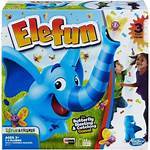
Twister encourages the ability to follow directions, balance, strength, coordination, identifying right and left side, color recognition, turn taking and social skills.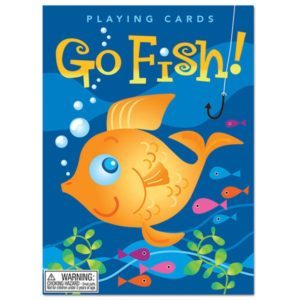
Whac-A-Mole challenges visual motor skills and reaction time skills.
Zoom Ball is a fun game that is challenging for arm and shoulder strength and motor planning. Tie the rope shorter to make this game easier.
Jenga Boom will have all laughing as you challenge fine motor, motor planning, decision making and reaction time skills for all ages.
An IPad is great for games, communication apps, movies, family photos and endless other options.
I hope you find these game ideas helpful to make gift giving easier for you this year. ABC Pediatric Therapy Network just wants to help.
Try out our Interactive Screening Tool to know how to further help your child at checklist.abcpediatrictherapy.com.
https://www.abcpediatrictherapy.com will have information to answer many questions you might have.


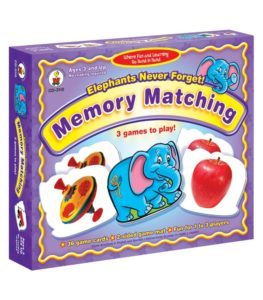
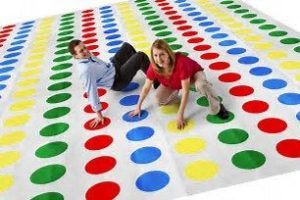
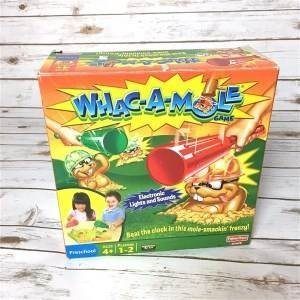
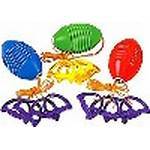
 Skip to content
Skip to content


